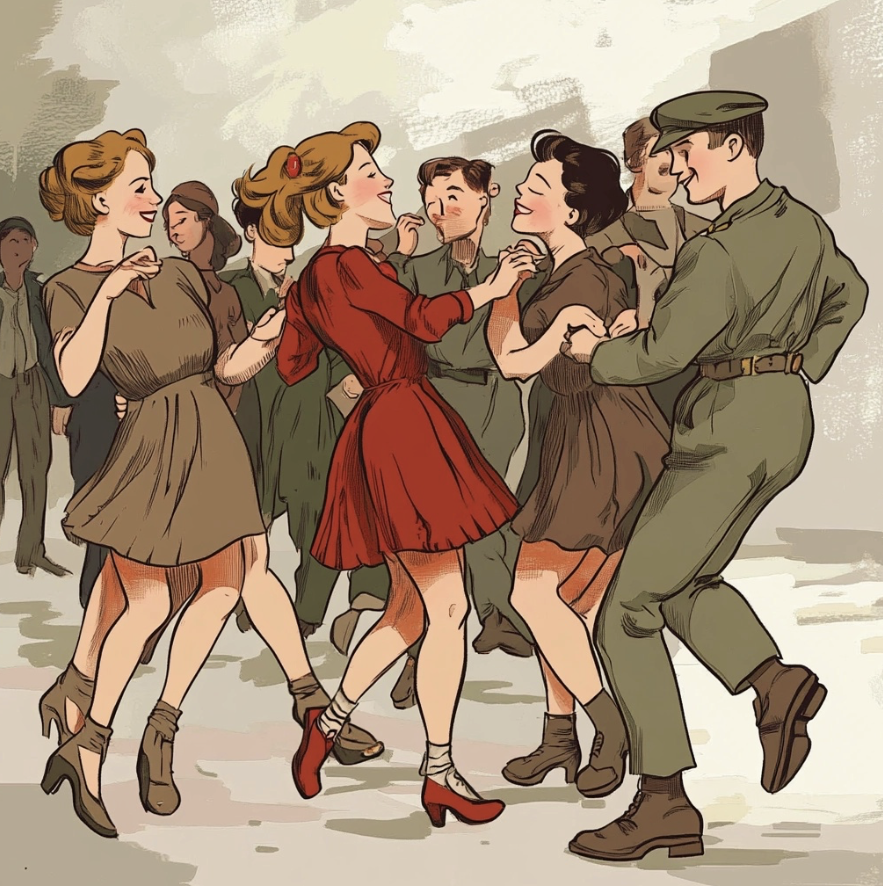💃 Willkommen to Fort Niagara — Where Even Prisoners of War Found a Beat to Dance To
💃 Willkommen to Fort Niagara — Where Even Prisoners of War Found a Beat to Dance To
One of the Strangest Chapters in Niagara’s Wartime History
Most people know Fort Niagara for its cannons and colonial battles. Some know it for its haunted tales and chilly lake winds. But few know that during World War II, it became the backdrop for one of the most bizarre episodes in American wartime history.
Between 1943 and 1946, over 1,200 German prisoners of war were held at Fort Niagara—young men captured on the battlefields of North Africa and Europe and shipped to the quiet shores of Lake Ontario.
They were the enemy. They’d been fighting for a regime built on hatred and domination. And yet—once here, in small-town New York—they were given warm meals, POW scrip, and often sent to work helping local farmers pick apples or mend fences. But even that wasn’t the strangest part.
🕺 Swing Music in a Time of War
As the war wore on, fears began to soften into curiosity. The young men behind the barbed wire didn’t look like monsters. They looked like kids. Lonely kids. Far from home.
And then, it happened: someone floated the idea of letting a few well-behaved prisoners attend a local community dance.
The answer? Yes. With conditions. With guards. With side-eyes and whispered gossip.
And so, on at least a few surreal nights, German POWs were escorted to American dance halls, where they swayed awkwardly to swing music, made small talk in broken English, and tried to make sense of their upside-down reality. It was a moment when the war, for a few hours, lost its shape.
During World War II, German prisoners of war were held at Fort Niagara.
❤️ Letters, Dances, and Tensions
Some locals were horrified. Others were curious. Some young women danced with the prisoners. Some never forgot. Rumors swirl even now—of love letters, of quiet friendships, of brief, fragile connections in a world divided by ideology and ocean.
And all of it happened under the stars at Fort Niagara—a site once built for war, now briefly transformed into something far stranger.
🏰 A Fort Full of Contradictions
Fort Niagara has seen Redcoats, Revolutionaries, and soldiers from every corner of conflict. But maybe no chapter was more unexpected than the one where prisoners from a brutal war—fighting for a terrible cause—found themselves dancing in Western New York, swept up in the rhythm of something resembling forgiveness, or at least curiosity.
🧭 Want more stories that go beyond the brochure?
Take a tour with Go Niagara Tours — where we explore not just the history, but the strange, human moments that make this region unforgettable.
During the War of 1812, on December 19, 1813, British forces captured Fort Niagara and took the flag to London, presenting it to the Prince Regent. The flag was later given to British General Sir Gordon Drummond, who kept it at his residence, Megginch Castle, in Scotland. In 1969, a fire at the castle damaged the flag, but it was rescued by the Drummond family. The existence of the flag became known in 1984, and in 1994, the Old Fort Niagara Association purchased it and returned it to the fort. After extensive restoration, the flag was placed on permanent display in a climate-controlled case at Fort Niagara’s Visitor Center in 2006 .



